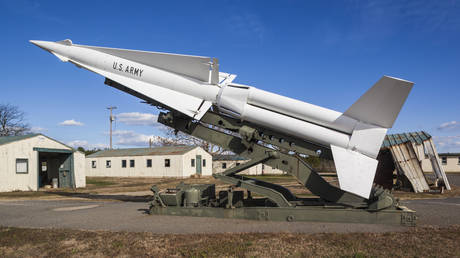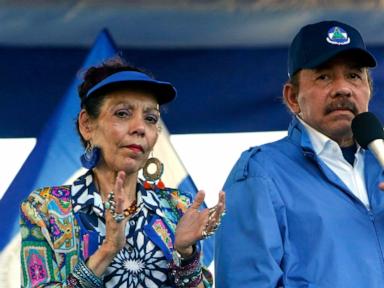ARTICLE AD BOX
LULEÅ, Sweden — The sun has just risen when the silver French air force tanker takes off from southern France bound for northern Sweden.
France’s April deployment of the Airbus A330 Multi Role Tanker Transport is part of the Pégase High North mission to Sweden’s northernmost air base of Luleå. It’s the third such visit by the French air force this year — a concrete example of Paris pivoting to European defense after decades of focusing mainly on the Indo-Pacific and the Sahel.
It’s also a sign of closer cooperation between two of Europe’s defense heavyweights as the continent boosts military spending to counter the threat from Russia, amid questions over the U.S. commitment to Europe’s security under President Donald Trump.
“We’re showing that we’re capable of operating across Europe in half a day,” said General Patrice Hugret, the head of the French mission.
Sweden and Finland joining NATO — a break from decades of neutrality triggered by Russian President Vladimir Putin’s invasion of Ukraine in 2022 — is putting more focus on the Arctic as the region becomes a growing source of tension for NATO, Russia and even China.
That makes the Swedish base a “sweet spot … to protect the border in the east,” said Colonel Peter Greberg, the commander of Luleå’s air base. “We’re approximately 600 to 700 kilometers away from the first Russian military base. From a flying perspective, it’s not that far.”
Despite very different geographies — Sweden is an Arctic nation that shares a maritime border with Russia, while France is on NATO’s southern flank and faces the Mediterranean Sea — Paris and Stockholm are surprisingly similar when it comes to defense policy, and they are getting closer.
Both countries share a vision of military self-sufficiency that includes a powerful, wide-ranging defense industry and armed forces able to defend their own territories without much outside help.
“We have been forced to develop a complete set of capabilities for our air force. [Before joining NATO], we could not rely on anyone else,” said the commander of the Swedish air force, Major General Jonas Wikman, standing in front of French Rafale and Swedish Gripen fighter jets on the Luleå airbase tarmac.
“That is something we have in common,” echoed General Nicolas Chambaz, who’s in charge of international relations at the French air and space force. “It’s so easy for Sweden and France to work together because we have exactly the same mindset.”
Kindred spirits
France and Sweden’s military ties stretch back centuries. In 1631, under the Treaty of Bärwalde, France agreed to provide financial support to help the Nordic nation in the Thirty Years War against Habsburg Austria; Sweden’s royal family is descended from a Napoleonic commander who went rogue.
French President Emmanuel Macron has been working to strengthen those ties, coming for a state visit in January 2024. Swedish Prime Minister Ulf Kristersson has been to Paris a couple of times this year, including to take part in a meeting of the “coalition of the willing” of countries allied with Ukraine.
 French President Emmanuel Macron has been working to strengthen those ties, coming for a state visit in January 2024. | Manon Cruz and Pool Maxxppp/EPA
French President Emmanuel Macron has been working to strengthen those ties, coming for a state visit in January 2024. | Manon Cruz and Pool Maxxppp/EPAThe supreme commander of the Swedish armed forces, General Micael Bydén, visited France in his first trip abroad after his country joined NATO, while Macron recently appointed the deputy head of the DGA arms procurement agency, Thierry Carlier, as French ambassador to Sweden.
“The geopolitical context only brings us closer together,” said Carlier.
Closer ties don’t mean complete harmony. French and Swedish arms-makers are also fierce rivals, as France’s Dassault and Sweden’s Saab compete for fighter jet contracts in South America. Sweden’s military industrial complex is also more closely tied to the U.S. than France’s.
However, France’s MBDA and Saab also pledged to deepen cooperation, and both Paris and Stockholm are in the European Long-Range Strike Approach missile project.
“Partnership with Sweden opens the way to cross-purchasing,” Carlier said. He confirmed that France is in talks to procure Saab’s GlobalEye surveillance aircraft to replace its aging Boeing E-3 Sentry AWACS airplanes, and said he hopes both countries will boost cooperation on air defense and the naval sector.
Crucially, Sweden is also among the European countries most interested in Macron’s proposal to talk about how French nuclear weapons can be used to protect Europe, several French and Swedish officials said.
The topic was addressed when Swedish Defense Minister Pål Jonson met with his French counterpart Sébastien Lecornu in Paris in March; several Rafales sent to Luleå during the Pégase High North deployment were nuclear-capable.
“The question of the [European nuclear] deterrent is looming in the background. We follow this very closely depending on how the Americans are operating and acting,” said Jakob Hallgren, the director of the Swedish Institute of International Affairs, referring to growing worries about the reliability of the U.S. under Trump.
NATO defense plans
In the winter, with heavy snow and darkness nearly 24 hours a day, the conditions are very harsh in the Luleå airbase, a highly secured airfield at the end of a long road framed by tall trees.
Now, as Gripens and Rafales roar into the blue, spring sky, there is barely any frost left.
“More and more air forces are coming to Luleå,” said Stefan Kaarle, a pilot who’s been in the Swedish air force for 30 years. “It’s a pretty important area of the world right now and many NATO countries want to show that they can operate from the high north.”
Sweden’s proximity to Russia, and previously the Soviet Union, pushed Swedish pilots to learn how to land on roads and highways — a technique that requires specific logistics and support. Such a skill could be useful for other NATO allies because it limits reliance on airfields, which can be more easily targeted by enemy forces.
 General Micael Bydén, visited France in his first trip abroad after his country joined NATO. | Claudio Bresciani /EPA
General Micael Bydén, visited France in his first trip abroad after his country joined NATO. | Claudio Bresciani /EPA“We don’t necessarily need that in France, but it’s good to have several strings to our bow,” said Colonel Frédéric Dalorso, the deputy head of the Pégase High North mission.
One of the French mission’s objectives, he explained, is to rehearse NATO’s regional defense plans. The French worked to improve their Agile Combat Employment skills — a NATO scheme of maneuver that implies flying fast and far — while the Swedes train to refuel their warplanes from the French MRTT.
Air-to-air refueling has been identified as a key capability gap for Europeans if the U.S. disengages from the continent.
In Luleå, Sweden and France worked on cross-maintenance and logistics by using local mechanics and local spare parts, for example aircraft tires. More broadly, Pégase High North’s aim is also to identify preferred areas for NATO’s regional defense plans.
“That way, if we need to deploy in six months or a year, the contacts will have already been made,” Dalorso said.
.png)
 3 months ago
3
3 months ago
3








 English (US)
English (US)